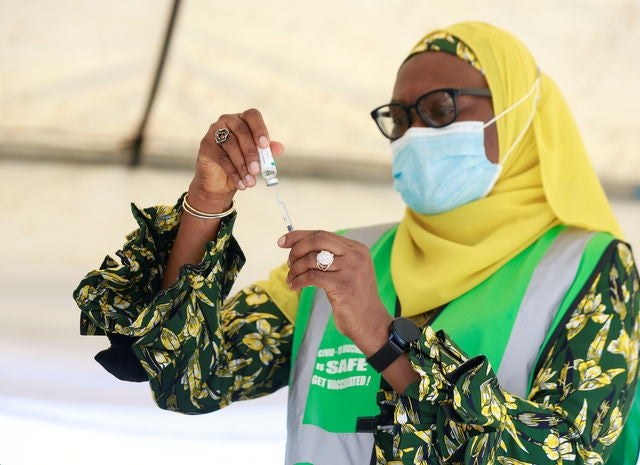Health leaders: Pandemic is an opportunity to invest in CHW programs
A recent commentary in "Global Health Science and Practice" argues community health workers not only help prevent pandemics, but also help maintain health service equity and access during emergencies

A recent commentary published in Global Health Science and Practice by health leaders and community health workers (CHWs) around the world makes the case that well-supported, trained, equipped, and compensated CHWs are a key element of strong, resilient, and accessible national health systems. It also says such CHWs not only help prevent pandemics, but also help maintain health service equity and access during emergencies.
The commentary by health leaders from Africa, Asia, North America, and Europe notes that the COVID-19 pandemic, which continues to highlight the key role played by CHWs, presents an opportunity for health leaders to invest in CHW programs to make “landmark improvements in the ability of health care systems to reach and serve everyone—even in difficult circumstances.”
The authors highlight a few key strategic adjustments health leaders and funders should consider to strengthen health systems, including: ensuring CHW programs are embedded in national health systems, aligned with government priorities, and responding to the needs of local communities.
“New philanthropic investments should align with and support government strategies according to their needs and changing circumstances, including the demands of civil society,” wrote the authors. “For CHWs to prevent, detect, and respond to pandemics and maintain delivery of essential health services in the context of significant disruption then, they must be treated as professionals. In other words, the best pandemic response is a strong, preexisting primary health care system integrated with the community level.”
Exemplars News has previously reported on how trained, supported, and equipped CHWs have maintained the delivery of primary health care during pandemics, in addition to directly supporting pandemic response. CHW advocates have noted that there is currently a mismatch between how heavily reliant health systems are on CHWs and how these frontline health workers themselves are so poorly supported. An estimated four out of five CHWs in Africa are unpaid. And those who are paid are often not paid in a timely manner, sometimes going months without a paycheck.
Exemplars in Global Health research supports the commentary’s findings. All the CHW programs analyzed by Exemplars in Global Health demonstrated the effectiveness of national government-driven strategies, and the benefits of ensuring CHWs are well-equipped and supported to deliver a comprehensive set of services in line with their community’s needs and priorities.
For example, Exemplars research found that Ethiopia’s community health worker program, which includes 40,000 full-time paid health workers and three million part-time volunteers, helped double immunization rates for rural children and cut under-five mortality by half between 2000 and 2016. This success was due in part to the government’s insistence on channeling internal and external resources to support the country’s flagship CHW program. Instead of funding vertical, disease-specific initiatives and cohorts, Ethiopia’s leaders worked to strengthen horizontal primary health care delivery and address the systemic failure of the health system.
Ethiopia’s mantra - for donors and government alike - was: “One Plan, One Budget, One Report.” The government developed the plan for the program, created the budget, and would issue regular reports on progress. The Health Extension Program has been, from its inception, a government-led, donor-supported program.
Exemplars in Global Health research has also found that many CHW programs fail to maximize their impact. The return on investment of the highest-performing program was about 10 times greater than the lowest-performing program. While some of those differences are explained by contextual factors such as population density, analyses indicate that optimizing the performance of CHW programs may be the most cost-effective way to expand basic health services. Exemplars research found one CHW program that was able to increase its return on investment by a factor of four over the course of three years, by adjusting CHW compensation (ensuring regular and reliable payments), supervision (consistency and modality), and programmatic target-setting. These findings will be published later this year.
The Exemplars in Global Health research also found that many CHW programs lack the data and infrastructure needed to fully understand the drivers of program performance. By investing in improved data collection, strengthening collaborations to ease access to data, and increasing the emphasis on quality data for those already tracking service delivery, health leaders can magnify the impact of existing programs. In the context of limited resources, optimizing the performance of programs can be a powerful accelerator of impact.
Bangladesh's collaboration with the International Centre for Diarrheal Disease Research, Bangladesh (icddr,b) Matlab, illustrates the value of continually collecting and responding to timely and high-quality data.
Beyond Exemplars in Global Health research, health leaders can find models to adapt and adopt and best practices in the Community Health Worker Assessment and Improvement Matrix and World Health Organization (WHO) CHW Guidelines.
